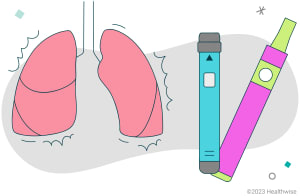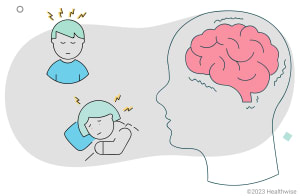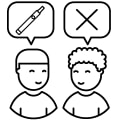Teens: Learning About Vaping
What is vaping?
Vaping is the use of a device to inhale vapour that may contain nicotine, flavourings, or chemicals from cannabis. The devices may also be called electronic cigarettes or e-cigarettes. They may look like pens or flash drives.
Why quit?

Vaping can cause serious lung injury. The vapour contains harmful chemicals that can damage your lungs.

Vaping products often have nicotine. Nicotine is addictive, and it can be hard to stop using it. It can be harmful to kids' and teens' developing brains.
6 ways to say no to vaping

Look the person in the eye and say, "No thanks." Say it as many times as you need to.

Say why you don't want to vape. Here's an example: "If my parents find out, they'll take my phone away."

Walk out. It's okay to leave a party or group where vapes are being used.

Offer another idea. "I'd rather play video games" or "Let's listen to some music."

Ask for respect if they keep asking. "I don't give you a hard time, so why are you giving me a hard time?"

Think ahead. If you think you might go where people are vaping, don't go. But if you do go, plan what you will do if someone offers you a vape.
Where can you learn more?
Go to https://www.healthwise.net/patientEd
Enter V004 in the search box to learn more about "Teens: Learning About Vaping".
Current as of: August 20, 2024
